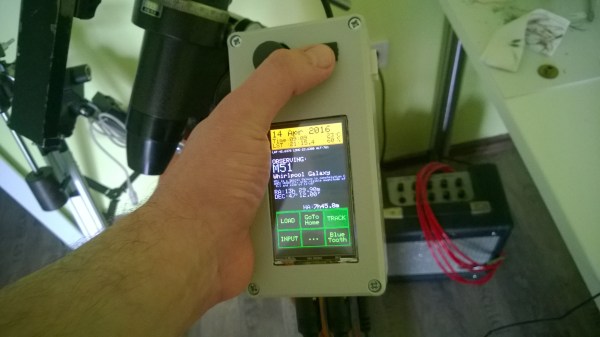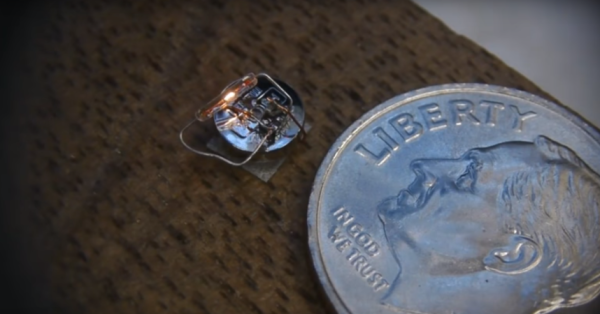The Hackaday Prize is more than just giving tens of thousands of dollars to hardware hackers. It’s also about funding the next batch of Open Source hardware products. Alongside The Hackaday Prize — the contest where we’re funding hardware that will change the world, — we’re also giving away $30,000 to the project that will best become a product. It’s almost like we’re funding hardware startups here.
[Dessislav Gouzgounov] wanted to build a small piece of hardware — a GoTo for his telescope. This handheld controller would allow him to use software to align the telescope with whatever celestial body he’s checking out.
Many GoTos simply interface with a laptop, but [Dessislav] built a standalone system centered around an Arduino Due and 240×400 touch screen, with GPS, RTC, and Bluetooth under the hood. It works on both hemispheres and contains a database of 250 celestial objects, features different speeds for time-delayed tracking of celestial, lunar, and solar phenomena, and it can work with any stepper-equipped telescope.
We covered [Dessislav]’s previous version of the RDuinoScope, but he’s improved the project considerably with over 2,400 lines of code including a new menu system and added a star atlas showing the location of the sky at which the telescope is currently pointed, among other improvements. The project is open source and you can learn more about it on [Dessislav]’s project page or check out his code on GitHub.
Continue reading “Best Product Entry: Telescope Control With RDuinoScope”






 Clocking in at 150 pounds and 45 inches in diameter, this thing is undeniably huge. The structure is made out of what looks to be veneered plywood glued together to make a ~2.5in thick structure to put their bearings in. And, after washing their bearings with soapy water, the students get to work press fitting their 2.2in by 10.5in ball bearings into their painted wooden structure. Their video embedded below is an entertaining watch, it starts with a gag, but moves on the project afterwards.
Clocking in at 150 pounds and 45 inches in diameter, this thing is undeniably huge. The structure is made out of what looks to be veneered plywood glued together to make a ~2.5in thick structure to put their bearings in. And, after washing their bearings with soapy water, the students get to work press fitting their 2.2in by 10.5in ball bearings into their painted wooden structure. Their video embedded below is an entertaining watch, it starts with a gag, but moves on the project afterwards.










